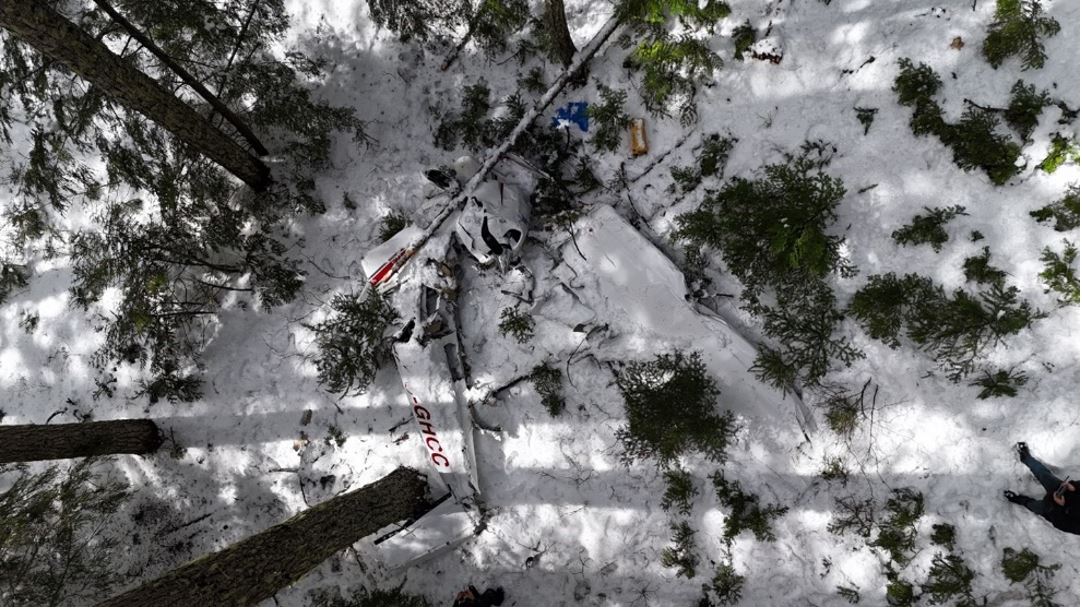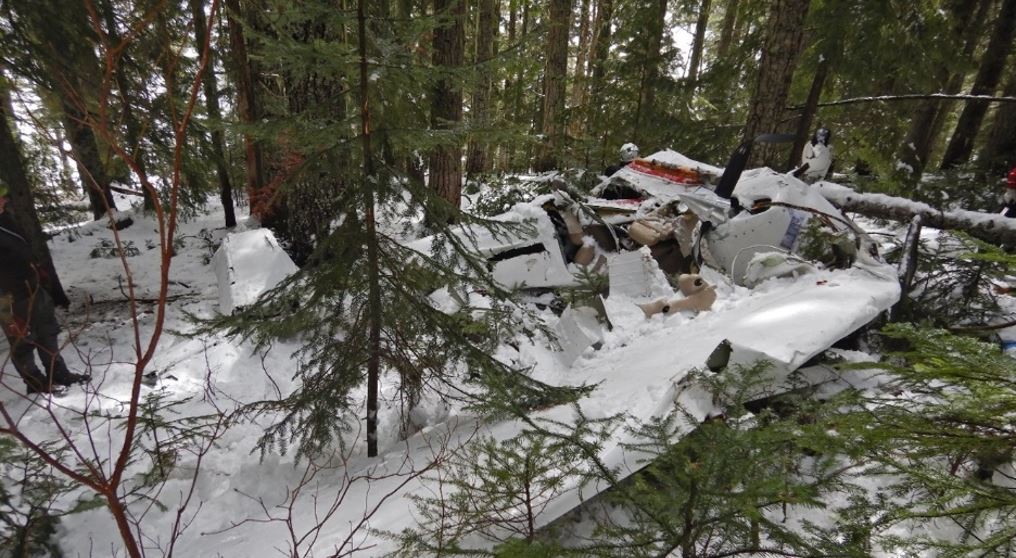Collision with terrain
Chinook Helicopters (1982) Ltd.
Cessna 172S, C-GHCC
Chilliwack Airport (CYCW), British Columbia, 28 NM ESE
The occurrence
On 5 April 2024, a Cessna 172S aircraft operated by Chinook Helicopters (1982) Limited with an instructor and a student on board departed Abbotsford Airport, British Columbia (BC), on a simulated instrument training flight under visual flight rules.
At approximately 12:30 pm local time, the aircraft took off and proceeded east. It was last observed on radar at around 12:39 pm, flying over the Chilliwack River Valley at an altitude of approximately 2125 feet above sea level. The aircraft subsequently collided with mountainous terrain in a remote valley.
At approximately 1:06 pm, an emergency locator transmitter (ELT) signal was received by the Canadian Mission Control Centre and relayed to the Joint Rescue Coordination Centre in Victoria, BC. Two minutes later, a crash detection notification was sent from an Apple device on board.
Both occupants were fatally injured. The aircraft was destroyed. There was no post-impact fire. Chilliwack Search and Rescue and Canadian Armed Forces Search and Rescue personnel deployed to the site and recovered the occupants. The TSB deployed a team on 9 April 2025, and the wreckage was transported to the Pacific Regional Office on 14 April 2025.
Work completed as of 23 April 2025
The investigation revealed so far that the aircraft's satellite tracking ceased approximately 20 minutes after departure from Abbotsford Airport. The weather conditions at the time of the accident were visual with light winds.
Media materials
Investigation information
Download high-resolution photos from the TSB Flickr page.
Class of investigation
This is a class 4 investigation. These investigations are limited in scope, and while the final reports may contain limited analysis, they do not contain findings or recommendations. Class 4 investigations are generally completed within 220 days. For more information, see the Policy on Occurrence Classification.
TSB investigation process
There are 3 phases to a TSB investigation
- Field phase: a team of investigators examines the occurrence site and wreckage, interviews witnesses and collects pertinent information.
- Examination and analysis phase: the TSB reviews pertinent records, tests components of the wreckage in the lab, determines the sequence of events and identifies safety deficiencies. When safety deficiencies are suspected or confirmed, the TSB advises the appropriate authority without waiting until publication of the final report.
- Report phase: a confidential draft report is approved by the Board and sent to persons and corporations who are directly concerned by the report. They then have the opportunity to dispute or correct information they believe to be incorrect. The Board considers all representations before approving the final report, which is subsequently released to the public.
For more information, see our Investigation process page.
The TSB is an independent agency that investigates air, marine, pipeline, and rail transportation occurrences. Its sole aim is the advancement of transportation safety. It is not the function of the Board to assign fault or determine civil or criminal liability.

